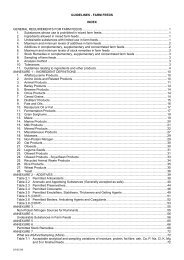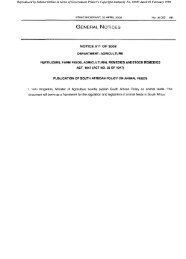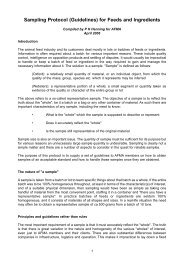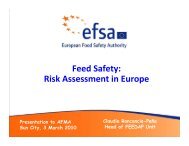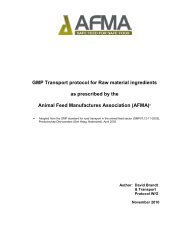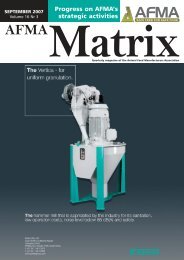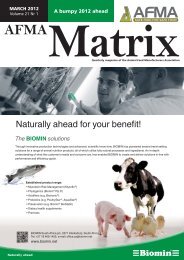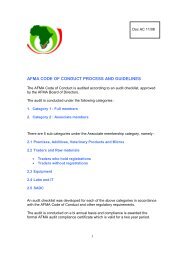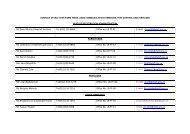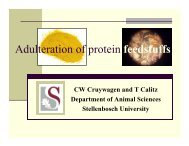Create successful ePaper yourself
Turn your PDF publications into a flip-book with our unique Google optimized e-Paper software.
ies showed that weight loss had a negative<br />
effect on either embryonic weight (Study 1)<br />
or embryonic survival (Study 2).<br />
The lack of effect on embryonic survival<br />
in Study 1 could be due to the relative<br />
low weight loss of sows, compared with<br />
Study 2. This indicates that weight losses of<br />
up to 11% probably do not influence embryonic<br />
survival and eventually litter size in<br />
second parity sows.<br />
Piglet birth weight can, however, be affected.<br />
The conclusion is that weight loss of<br />
more than 11% negatively affected embryonic<br />
survival and possibly embryonic weight,<br />
and should be prevented.<br />
Sow reproductive issues<br />
Weight loss during lactation consists mainly<br />
of losses of body fat, body protein and body<br />
water. Of these three, body protein losses<br />
have been reported to have the largest effect<br />
on reproductive performance (Clowes et<br />
al., 2003ab; Willis et al., 2003).<br />
Therefore, in Study 2 back fat depth, as<br />
a measure for fat loss, was measured. In addition,<br />
loin muscle depth as a measure of<br />
protein loss was measured. Although high<br />
weight loss sows lost more weight than low<br />
weight loss sows, back fat loss was similar at<br />
4,6mm and 4,8mm respectively.<br />
Loin muscle depth loss was 4,2mm higher<br />
for high weight loss than for low weight loss<br />
sows. These results indicate that weight loss<br />
was more related to loin muscle depth loss<br />
(r = 0,6; P



